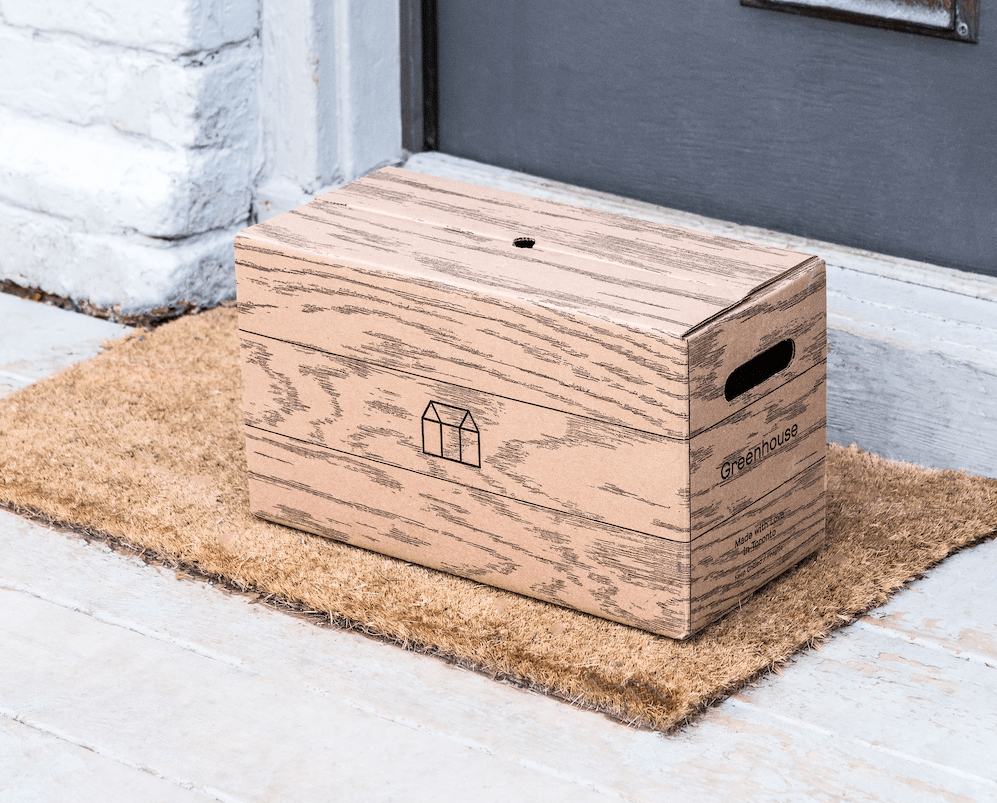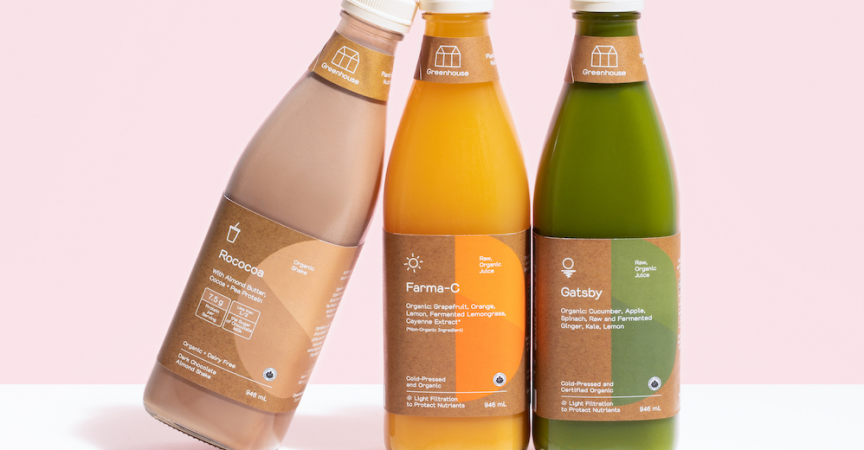Greenhouse’s Four Strategies for Adapting to the ‘New Normal’
The Greenhouse marketing team had big plans for the spring of 2020. In early April, we were set to launch our first-ever national advertising campaign. Our goal was to introduce Greenhouse to new customers across Canada: we were on track to almost double the number of grocery and foodservice locations carrying our organic, plant-based beverages by the end of the summer.
After years of research and development, we were also on the verge of launching our sister company, Herbert, in our Toronto retail stores. We couldn’t wait to introduce our customers to Herbert’s Phytotonics and Boosters, which are infused with highly bioavailable plant extracts that make us more resilient in the face of stress.
On a Thursday in mid-March, I left Greenhouse’s downtown office as usual at about 5 p.m., to see my two-year-old. Unusually, my husband and co-founder Anthony Green, Greenhouse’s CEO, came with me. Even more unusually, we brought everything we could possibly need for the next few months and advised the rest of the team to do the same.
The next morning, from our living room, Anthony convened our COVID-19 Response Committee for an 8:30am call. This was how we would start every weekday for the next month, muting our microphone to keep our daughter’s demands for a dance party from distracting the team.
On these calls, we discussed how to adjust to an ever-shifting present and an uncertain future. As of that Friday morning, we had closed our production facility to all but the most essential in-person employees. By the following Thursday, we had temporarily closed most of our retail stores, our foodservice channel was suffering, and growth was on pause. The only certainty was the need to adapt. Quickly.
1. Contactless Delivery and the Plant Pantry
We are fortunate to be a business with several well-established distribution channels, including home delivery. Since 2014, Greenhouse has offered doorstep delivery from Greenhouse.ca. With refrigerated vans on the roads overnight delivering fresh products from our production facility to our stores, it has long made sense to also fulfill direct-to-consumer deliveries and subscriptions.
Suddenly, with restaurants and cafés closed, many of our fellow local food and beverage businesses had lost distribution. Meanwhile, our customers were looking for safe, efficient ways to stock up on healthy products for their pantries and homes.
And so we did the most logical thing we could think of and set to work building the Greenhouse Plant Pantry: a shoppable collection of high-quality, locally sourced pantry and home goods (including refrigerated and frozen items) that we deliver overnight across the GTA, seven days a week.

We launched the Plant Pantry in mid-April, and we now carry meal solutions from local restaurants, fresh and frozen produce, freshly roasted coffee from local roasteries, and more alongside our organic beverages. Our customers have welcomed the opportunity to round out their baskets with healthy goods from local businesses, and home delivery has grown materially as a proportion of our channel mix. The trend toward grocery delivery appears to be here to stay in the post-COVID reality, and we will continue to invest in this channel accordingly.
2. New Formats
The trend toward eating and drinking for preventative health is not new, but it has been accelerated by the COVID-19 crisis. We founded Greenhouse to make healthy and sustainable products widespread and accessible – our products are organic, plant-based, functional, lower in sugar, and bottled in glass – and the relevance of this mission continues to grow.
Early in the pandemic, we began to see increased demand for our beverages with natural immune-boosting properties, such as our Boosters and Juices high in Vitamin C. For ease of stocking up, we have bundled our Cold-Pressed Juices, Boosters, Probiotic Lemonades, Kombuchas, and Shakes into six-packs. These have been successful not only via our own channels, but also when properly merchandised by partner retailers.
3. New Placements at Partner Retailers
Grocery shopping has changed. Shoppers have reduced the number of times they visit the grocery store from about once a week to once or twice a month and are getting in and out as quickly as possible. These days, shoppers are gravitating toward the centre of the store, to the shelf-stable and frozen aisles, and neglecting the usually far more popular perimeter, where produce, dairy, and shorter shelf-life products are housed.
While the declining perimeter traffic is affecting our business, we’ve seen some retailers take the insightful step of putting our Juices and Boosters along check-out line-ups, where we’re used to seeing impulse buys like chocolate bars and gossip magazines.
This has resulted in a significant lift, and it is something that we believe will become the norm as more retailers recognize the increased (and lasting) relevance of health and wellness to today’s shopper.

4. Foodservice Innovation
As we know, the restaurant and foodservice community has suffered painful losses in recent months, as one of the industries hardest hit by the COVID-19 crisis.
We have been inspired to watch our restaurant, café, and specialty store partners come up with unique ways to continue serving their communities, even with their storefronts shuttered. They have dedicated significant resources to providing fresh meals to front-line workers and food banks. They have found new ways of partnering with delivery apps, introduced at-home meal kits (in some cases through our Plant Pantry), launched catering options that include our multi-serve bottles and six-packs, and opened take-out windows and pop-up shops with DIY cocktails.
We are excited to be a part of these solutions wherever possible, and we continue to innovate in our own stores as well. For example, we launched the Plant Pantry from our three pick-up and delivery stores last week, we’ve now soft-launched Herbert in these stores, and we will re-introduce a limited Smoothie and Smoothie Bowl menu in the coming days.
Even with the gradual re-opening that is now beginning to take place, it will take a long time for our old habits of eating and drinking elbow-to-elbow to be re-established. And yet, with spending on large purchases and expensive experiences on hold, small luxuries and high-end staples have become increasingly important to customers, who are looking for an escape from cooking, ways to celebrate big occasions at home, and small indulgences to keep the days from running together.
While the “New Normal” will not look anything like what we had mapped out in our forecasts, we strongly believe that the businesses that are seeing this and innovating accordingly will not only live to tell the tale, but will participate in shaping the way we live, eat, and drink into the future.









